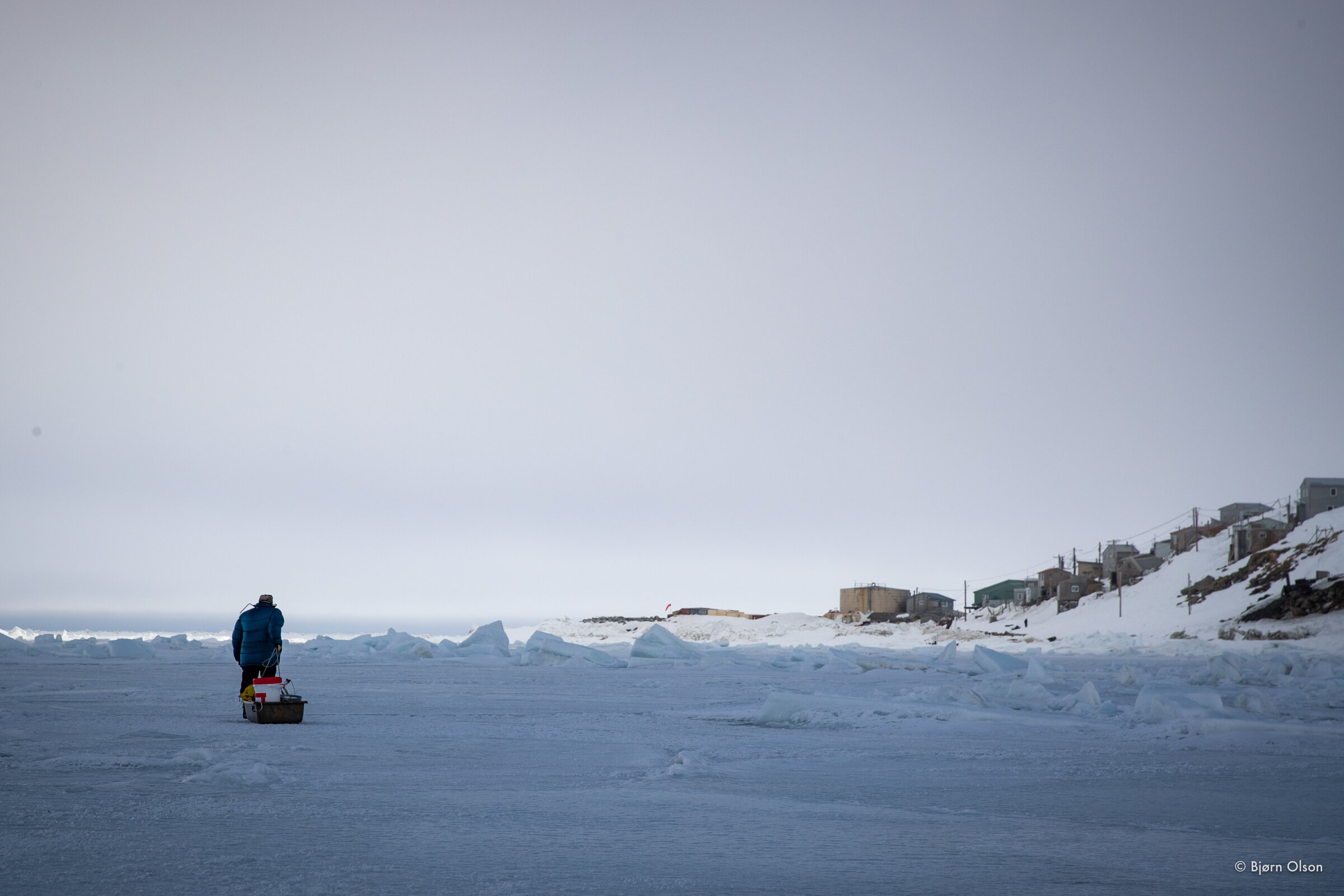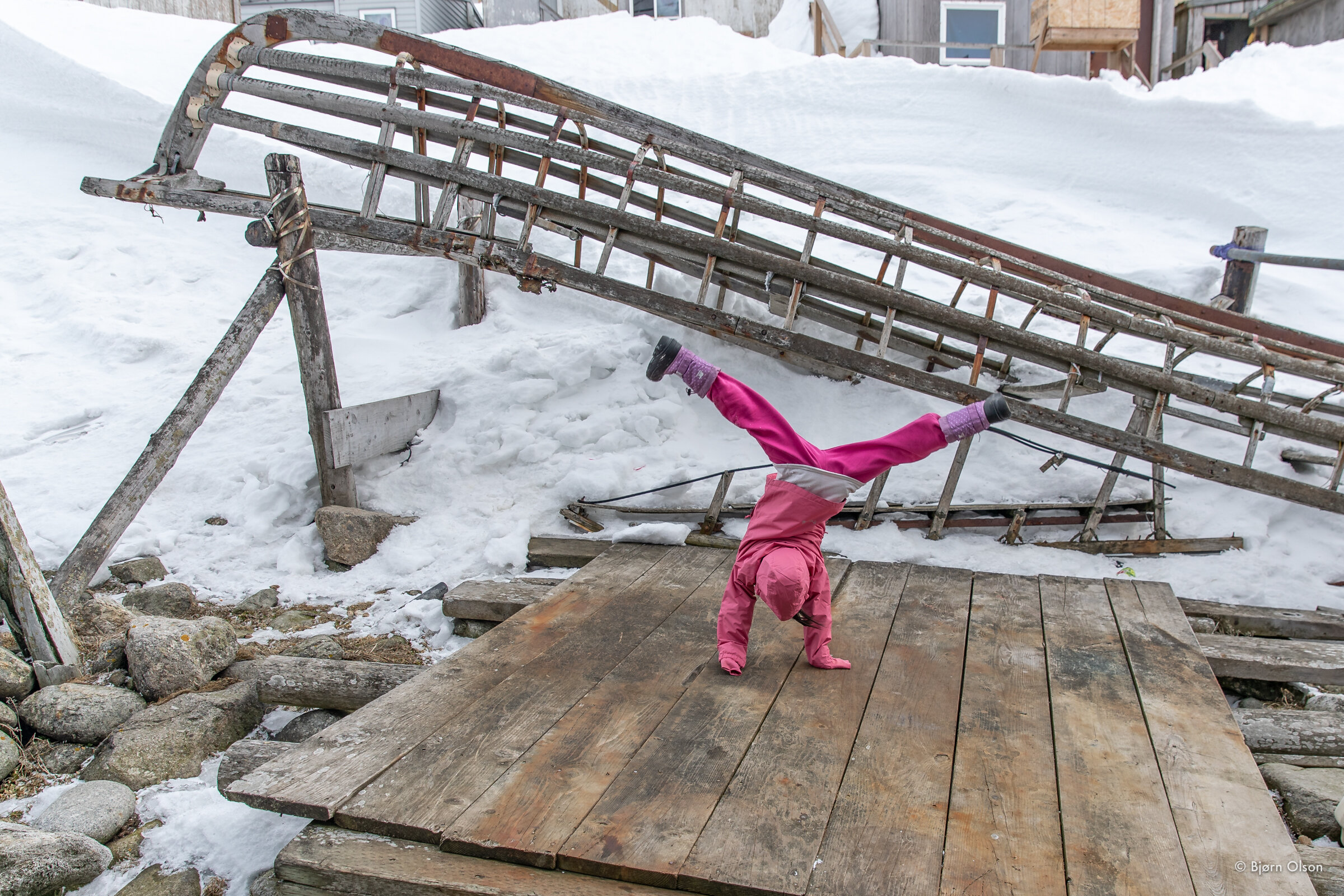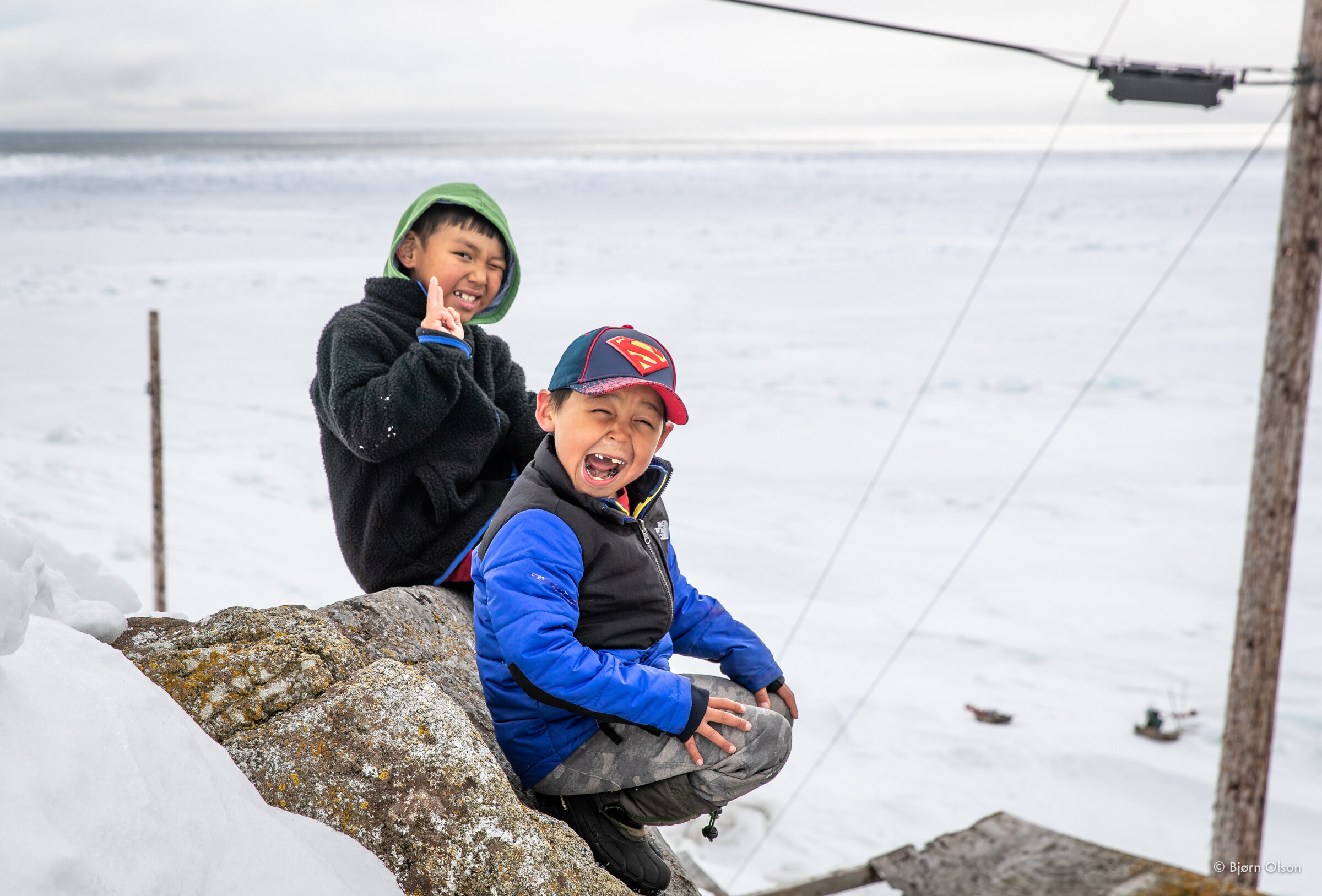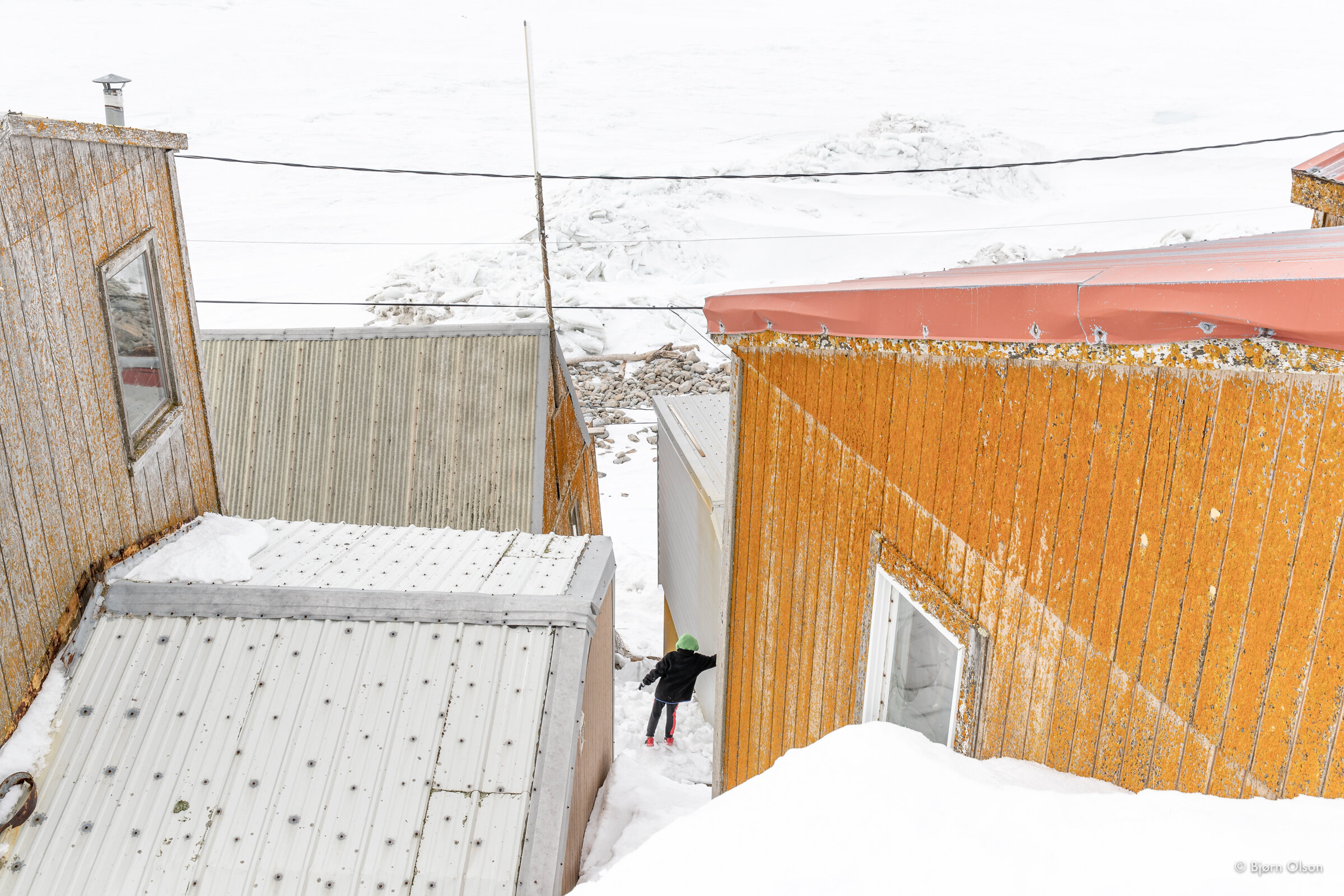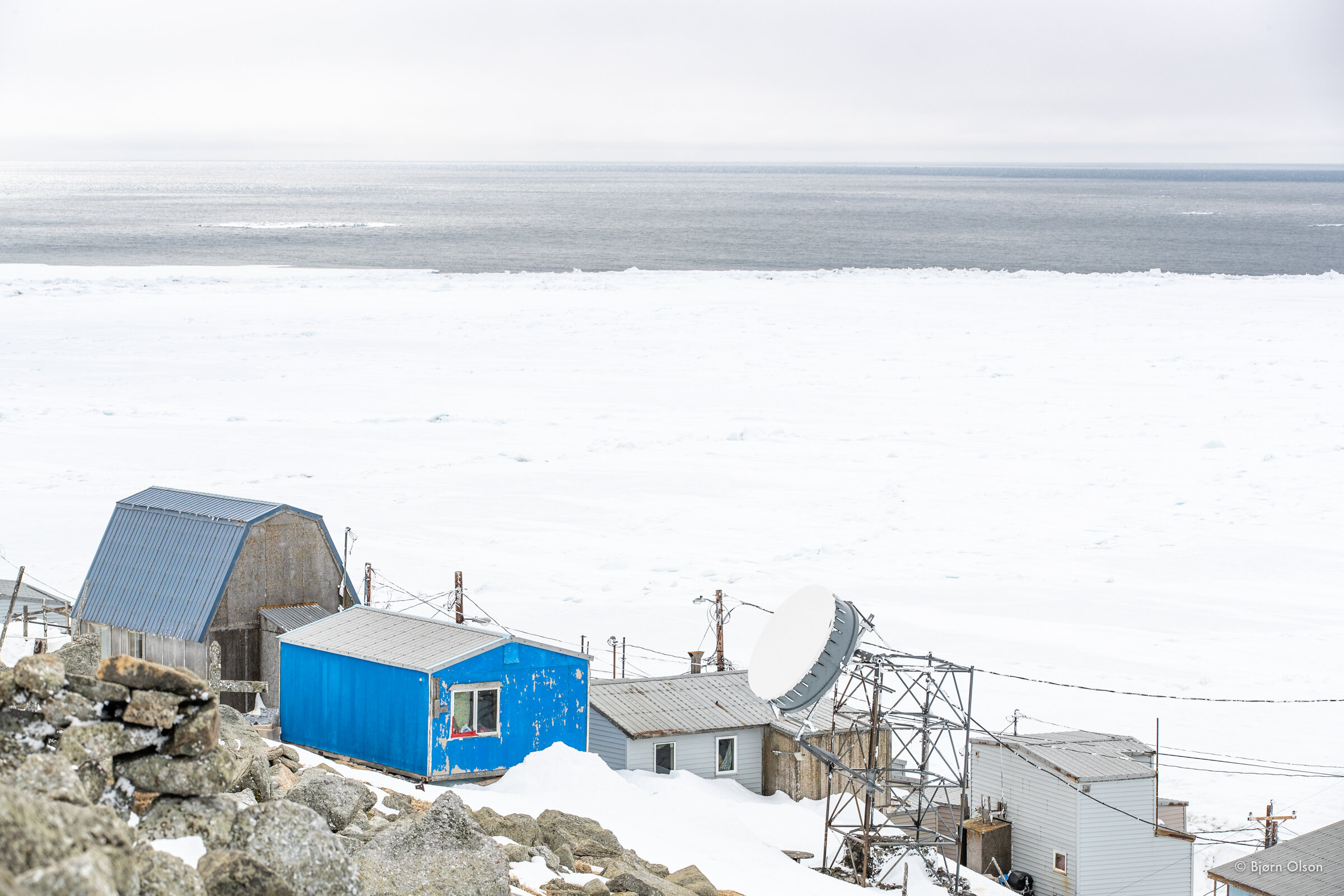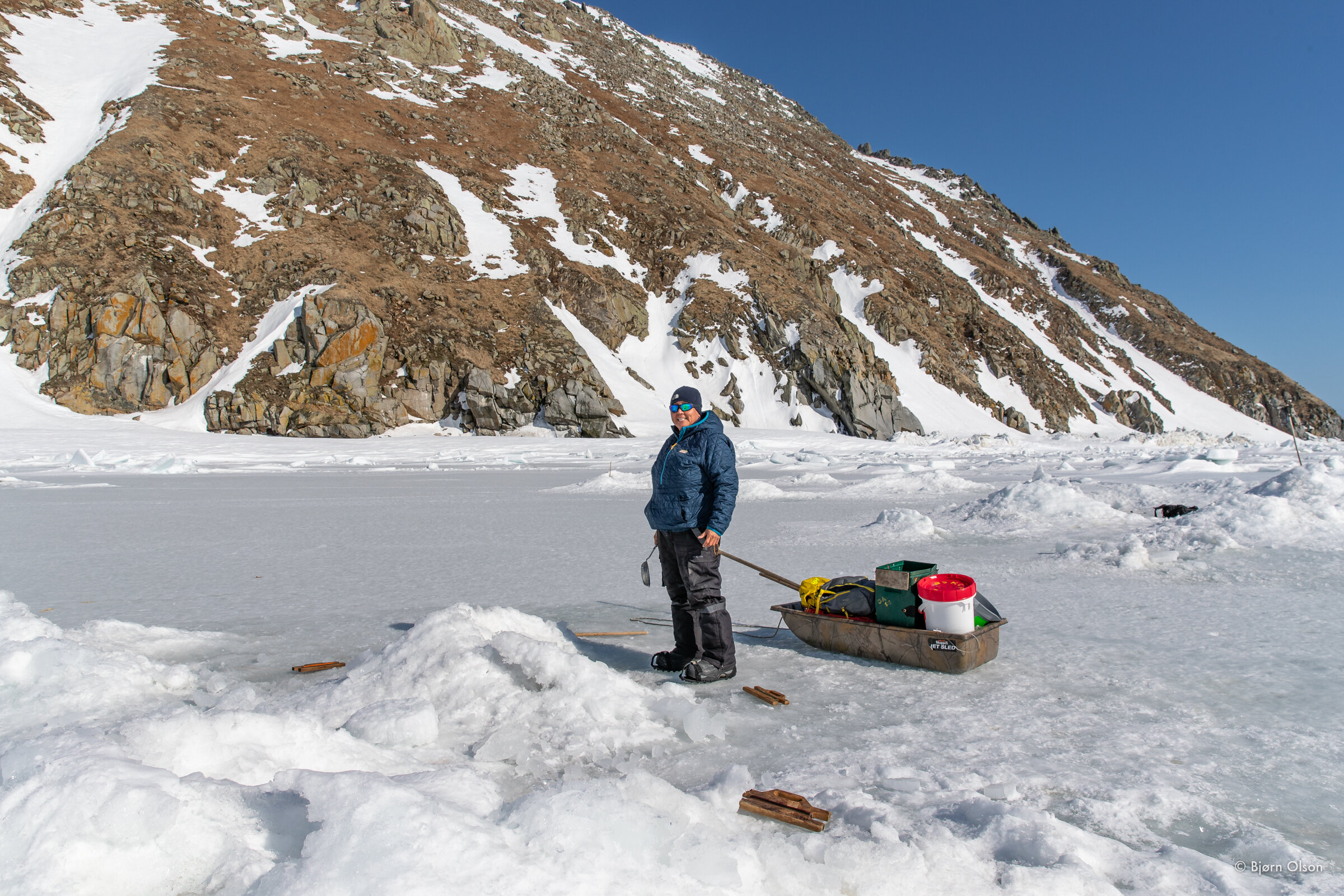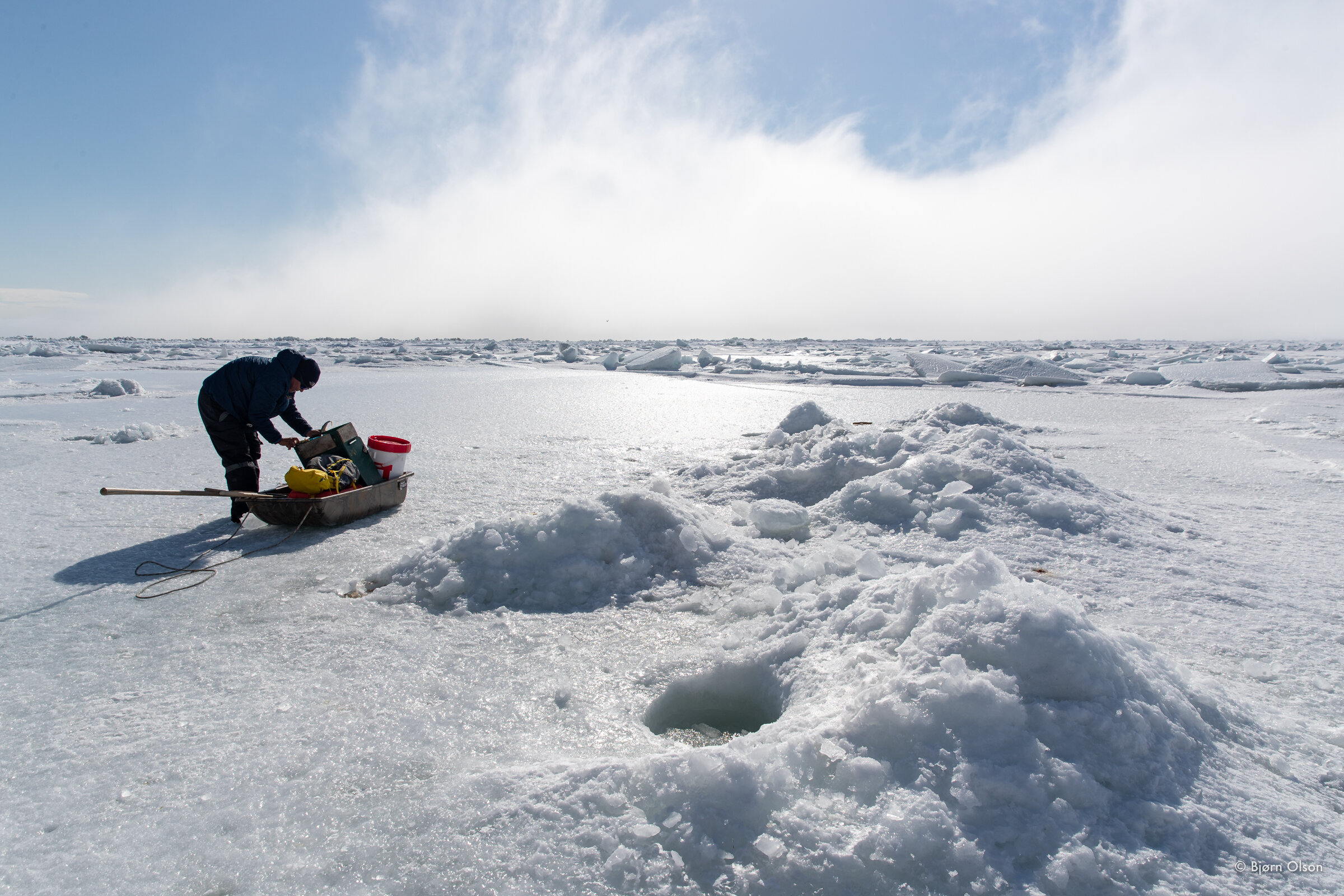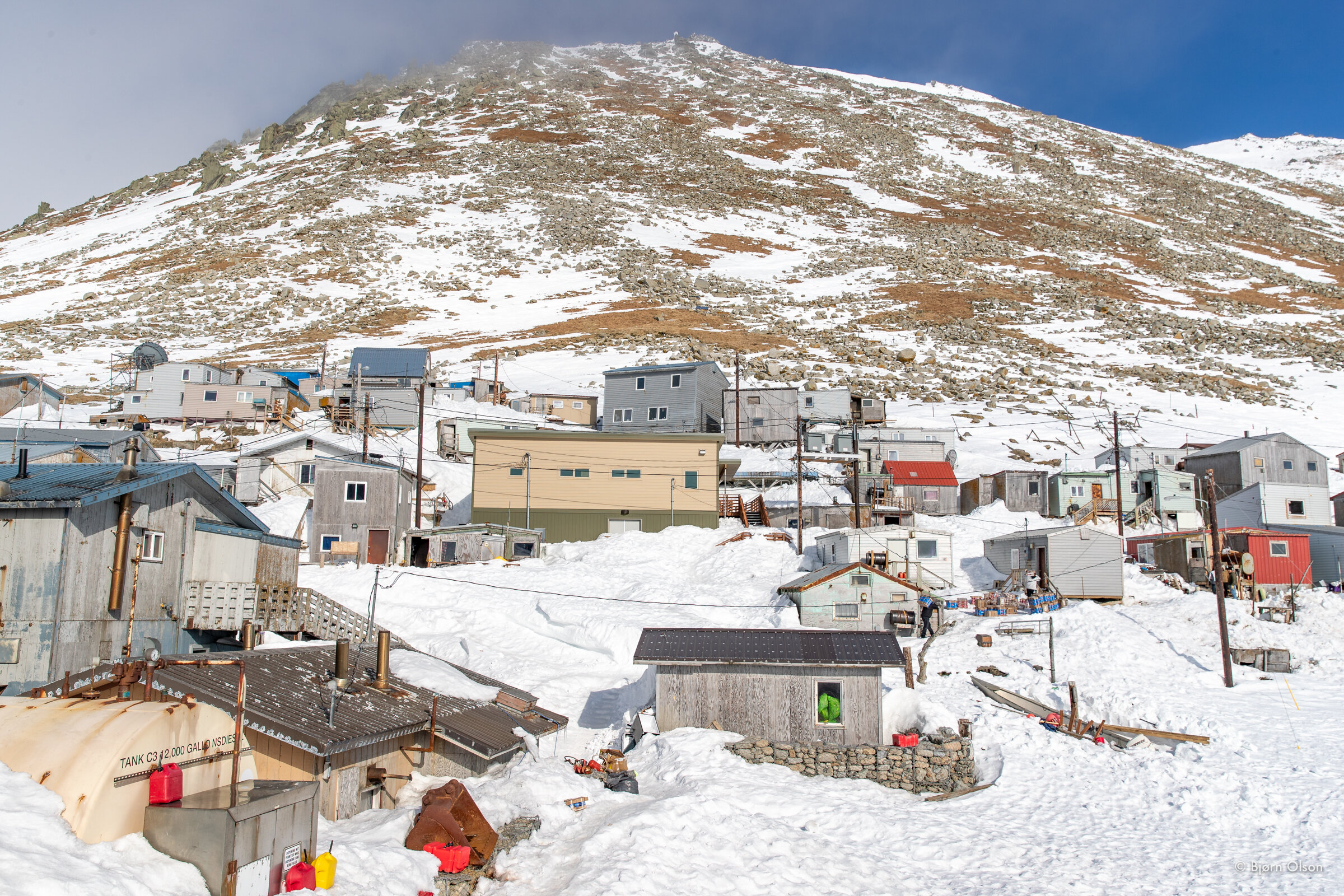Bering Sea-Change
Bjørn Olson
This story was originally published in Alaska Magazine.
The village of Diomede.
Nome, renowned as the finish line of the Iditarod Trail, the ancient hunting grounds of the Inupiat and as the site that the Three Lucky Swedes, who, in 1898, discovered gold and kicked off a stampede of fortune seekers, is one of my favorite Alaskan towns. Along with my partner, Kim McNett, I have been to the community many times for fat-bike adventures in both winter and summer. Last winter, however, we were on a different sort of adventure. The bikes stayed home; we’d flown north from our home in Homer to make a documentary film about the island community of Little Diomede.
Situated in the middle of the Bering Strait, where Alaska and Siberia nearly touch, the village of Little Diomede is home to fewer than 100 people. Big Diomede, a mere 2.5 miles to the west, is part of Russia, and the International Date Line runs between the two. For at least 3 thousand years a sturdy and hyper-adept civilization of Inupiat people, the Ingalikmiut, have made their home on this resource rich, remote and rocky island in the sea.
For 8 days time in February we had attempted to travel to this remote community by the only commercially available option: helicopter. For over a week, thick ice fog prohibited air travel and we were forced to settle for a second attempt in March. When we returned, we were again confronted with poor flying conditions for another 8 days, even having flown halfway out only to turn back as the fog thickened over the open water in the straight. This also happened to be the week that the world fell to pieces as the pandemic began.
Kim had visited the island on previous occasions, through the Artists In Schools program, and worked with the students to create a string-art food web of the Bering Strait ecosystem. Bits of colored twine connect individual species to the foods that they depend on. This interconnection to food resources extends from a geometric sun at the center of the installation, to the plankton and the small fish, on up to the iconic animals like the bowhead whale, walrus, polar bear, and the Ingalikmiut.
Opik Okinga, Diomede’s Environmental Coordinator, has been championing the preservation of these essential connections that the ecosystem provides to human life on the island. As is the case with most of the island’s residents, Opik’s relationship with the environment is part of an ancient continuum. This legacy of interconnection with the natural world, the seasonal variability, the annual migrations, the harsh conditions and the access to rich, nutrient dense animals, stretches back thousands of years.
Rapid climate change is throwing the animals in this unique and hyper-rich food web (and the people who depend on them) into turmoil. Opik invited Kim and me to make a documentary film with the community about the breakneck environmental and climatic changes that Diomede is experiencing, and the threats it is posing to their cultural way of life.
As little as 10 years ago, our journey to Little Diomede would have been less fickle. Airplanes, rather than the more costly and weather-dependent helicopter, regularly serviced the community. In the winter, ice conditions—almost without fail—allowed for the plowing of a runway on sea ice at least 4 feet thick. These conditions have nearly vanished.
One egregious example of this rapid change came in February of 2018. A storm broke up the ice between Little and Big Diomede. It never returned. No one in living memory had ever seen or had to contend with this profoundly disruptive circumstance. The road grader that once plowed the ice runway now sits in disrepair on the edge of the village, a symbol of a soon-to-be bygone era.
For millennia, the reliable platform of ice has allowed the residents of Diomede to step off their steep island and out onto the sea to subsistence hunt, fish and to catch crabs. The ice had protected the community from monstrous waves generated by the severe winter storms and is an essential ingredient for the nutrient cycle that has supported this biologically rich ecosystem - world famous for its monstrous King crab.
“Climate change is real,” Opik tells us. “and it is demanding that we the people must learn to live around new seasons, weather, ice conditions, and even the loss of our culture. Soon, we won't see the manners we practice, the practices that our ancestors gave us to survive.”
While waiting in Nome, Kim and I interviewed Diomede residents who now make their home on the mainland and local scientists. On a blizzardy afternoon, we met up with Gay Sheffield, a marine biologist and professor at the University of Alaska Fairbanks’ Northwest Campus in Nome. “The ecosystem that was here has changed,” she says. “Everything has changed. The water temperatures have warmed, which make it hard for the ice to form and the wind direction has switched.”
“When I came to the region in 1992,” Gay says, “my job as a marine mammal biologist was to study the reproductive rates of seals or other interesting things like... What is the diet of walrus’? That’s how it was; those were the kinds of things we would study.” Over the last 10 years, the focus has switched. The topics have increased and most of them bode ill for the region. “Now it’s response, not study, that we do,” Gay said. Residents who rely on wild-caught food and the scientists who research those creatures are both in crisis mode.
Our heads swam as she continued to regale us with the myriad changes and how they relate to a rapidly warming climate. As we stepped out of the building and back into the winter storm, I was reminded of a John Muir quote. He observed that, “When we try to pick out anything by itself, we find it hitched to everything else in the universe.” For the people of Diomede, everything is hitched to sea ice.
Each morning Kim and I checked the weather report and called into Pathfinder Aviation to inquire if today would be the day we’d finally fly to Diomede. “Check back tomorrow morning,” the recording perpetually advised. We would then switch on the news to learn more about the spread and infection rate of the SARS-CoV virus that was now officially in the United States.
As the Covid-19 case count around the nation grew and the pandemic began, it was decided by all that we must abandon our attempt to reach the island community. The documentary would have to be put on hold, a sad reality to accept given the urgency of the situation and the need for the world to heed the warning that Diomede suffers.
Since last March, scientists the world over have worked tirelessly to develop a vaccine. Our civilization has again demonstrated our ability to rise to tough and complex challenges. Someday soon this pandemic will be in our collective rearview mirror and a sense of normality will return to our lives. Someday soon we hope to succeed in documenting the profound ecological occurrence taking shape in the Bering Sea and share it near and far for the sake of the Ingalikmiut and humanity as a whole.
This virus has required us to modify our behavior, show restraint for the good of all and to also listen to the scientific community. The Ingalikmiut people of Little Diomede, and myriad other frontline communities, are imploring that we stop and listen to their stories, trust the science, and truly digest how disruptive climate change has already become for them. If we can hear their stories, perhaps we will have the foresight to take precautions against similar ecological fates that may soon befall us all.
Post script: Since the publication of this story, Bjørn was able to fly to Diomede and work on the film with the tribe.
